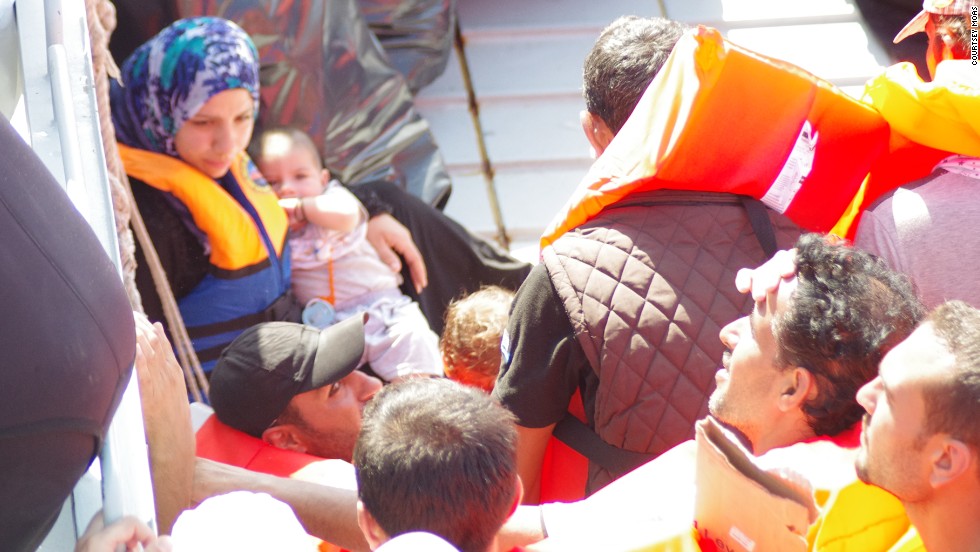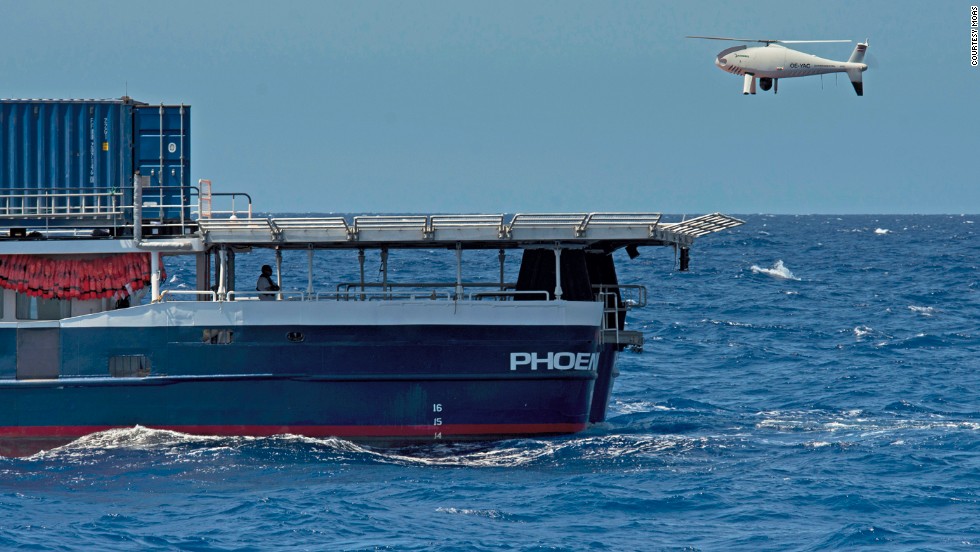
Meet the wealthy couple on a mission to save drowning migrants
(CNN) Shortly before midnight on Saturday, an estimated 700 migrants plunged to their deaths in the frigid Mediterranean, some 180 kilometers south of Italian shores.
"Nothing less than genocide," is how the Maltese Prime Minister Joseph Muscat described the tragedy, which comes less than a week after another 400 people lost their lives attempting the dangerous sea crossing.
But come May, there will be another search-and-rescue ship scouring the waves for migrants fleeing war and poverty in Africa and the Middle East -- though this is hardly your typical life-saving mission.
Meet Chris and Regina Catrambone, a wealthy couple whose 40-meter floating medical center has already rescued more than 3,000 people since launching late last year.
Inspired by a sermon from Pope Francis in which he criticized what he called the "global indifference" to the refugee crisis, the couple invested in a 483-ton converted fishing trawler, called "Phoenix."
The boat is equipped with two high-tech drones, a medical clinic, 1,000 liters of water, hundreds of life jackets, and food. Manning all of this is a crew of 20, including doctors, paramedics, and one cook.
Digging deep into their own pockets, the Catrambones are spending an average $445,000 each month in operating costs, describing themselves as "social entrepreneurs" who make their money from running an insurance, emergency assistance, and intelligence company.
A fight against time
In the next few weeks they will again head out to sea, in what is expected to be their toughest voyage yet.
"We are really fighting against time," said Regina, originally from Italy and now living in Malta with her American husband and daughter.
"What is happening in Syria and Libya, it's pushing people away," she explained. "The EU must launch a credible search and rescue operation to avoid this situation. We will be there -- but we're only one boat," she said of the project, called Migrant Offshore Aid Station (MOAS).

Refugees receive help from rescue boat "Phoenix."
If the death toll from Saturday's disaster is confirmed, it will mean 1,600 migrants have died trying to reach Europe so far this year -- compared to 96 deaths in the first four months of last year, according to the Internal Organization for Migration.
Catrambone puts the rise in deaths partly down to the ending of Italian-run search-and-rescue operation, Mare Nostrum, in October. Similar fears have been expressed by Amnesty International's director of Europe and central Asia, John Dalhuisen, and the secretary-general of the European Council on Refugees and Exiles, Michael Diedring.
The operation, which cost €9 million per month (U.S. $9.7 million,) was credited with saving 140,000 migrants in one year.
Instead, the EU border agency, Frontex, now runs a limited operation called Triton, which has a reported budget of €3 million (U.S. $3.2 million) per month. Frontex has no vessels or surveillance equipment of its own, so has to rely on European member states to lend it ships.
"Scaling down Europe's rescue operations has not discouraged these desperate migrants from risking their lives in dangerous crossings," said MOAS's director of operations Martin Xuereb, himself a former chief of defense of the armed forces of Malta -- the body responsible for search-and-rescue in the area.
"It has only led to more deaths."
Frontex was not immediately available for a comment. But European officials say the roots of the crisis are beyond their control. "As long as countries of origin and transit do not take action to prevent these desperate trips, people will continue to put their lives at risk," the European Commission said.
All hands on deck
Once at sea, MOAS sends out drones equipped with camcorders to search for boats, adding that "the primary aim is to prevent the loss of life, not ferry migrants."

Rescue ship "Phoenix" features two drones to scout out surrounding areas.
The MOAS team then reports back to the nearest authorities and awaits instructions and help. If necessary, it will offer life jackets, medical assistance, and evacuate refugees on board.
This year, it will also be partnering up with Doctors Without Borders, who will be heading post-rescue care.
Captain Filippo Marini, spokesman for the Italian Coastal Guard, would not comment on the merits of the MOAS, saying: ''They are a resource but it's not up to us to say if it's an appropriate initiative."
Reality check
Perhaps the biggest wake-up call for the Catrambone couple -- both in their 30s -- came while holidaying on board a luxury yacht in the Mediterranean last summer.
"I saw a winter jacket in the water, and I said to the captain, who is also a retired coast guard of Malta: 'Look isn't it strange,'" said Regina.
"And his face became very sad, and he told me: 'The person who was wearing this jacket is not with us anymore.'"
The comment struck Regina like a lightning bolt --"it was like 'boom!'" she said.
"Here we were in this nice boat, when the migrants, people like us, are attempting to cross because there's a war in their country.
"These people are dying at Europe's door. We have an ethical and moral obligation to do something."
For the Catrambones, this is a moral obligation that transcends borders.
No comments:
Post a Comment